In clinical practice in the United States, Breast Imaging Reporting and Data System (BIRADS) breast density categories are used in mammographic reports to indicate the degree of mammographic breast density a) The breasts are almost entirely fatty, b) There are scattered areas of fibroglandular density, c) The breasts are heterogeneously dense, which may obscure A woman whose breast tissue is primarily fatty replaced will have a mammogram that looks more dark There are 4 categories of breast density (also called a density score) that a radiologist uses for describing a patient's mammogram Class A (or 1) Fatty; He does so by comparing the ratio of dense tissues to nondense tissues On getting the comparison done, he assigns a report which might suggest any one of the following four levels of breast density Breast Imaging Reporting and Data System (BIRADS) is used to assign the levels of breast density These levels are named A, B, C and D
What Breast Density Means To You Stacey Vitiello M D
What is breast density category c
What is breast density category c-Breast Density Report Your report will also describe the composition of your breast tissue This is divided into four categories related to breast density Category A Entirely fatty Category B Scattered areas of fibroglandular density Category C Heterogeneously dense, which may obscure masses Category D Extremely dense, which lowersDo you know if you have dense breasts?
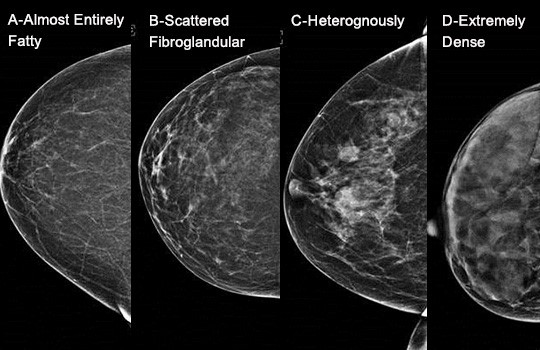



Understanding Breast Density Western Missouri Medical Center
C Heterogeneously dense indicates that there are some areas of nondense tissue, but that the majority of the breast tissue is dense About 4 in 10 women have this result D Extremely dense indicates that nearly all of the breast tissue is dense About 1Four mammograms with different breast density categories are shown Breasts can be almost entirely fatty (see A), or have scattered areas of dense fibroglandular breast tissue (see B) Dense breasts are either heterogeneously dense and have many areas of glandular and connective tissue (see C), or are extremely dense (see D) The term density describes the degree of xray attenuation of breast tissue but not discrete mammographic findings c The breasts are heterogeneously dense, which may obscure small masses Some areas in the breasts are sufficiently dense to obscure small masses d The breasts are extremely dense, which lowers the sensitivity of mammography
People with heterogeneously dense breasts have more glandular and fibrous tissues and fewer fatty tissues If you have heterogeneously dense breasts, your doctor may tell you that you have fibroglandular tissue, meaning the fibrous and glandular tissues make up the largest composition of your breast40% of women fall in the category Heterogeneously Dense Breasts/Category C/5075% (considered dense breasts) 10% of women fall in the highest category 'Extremely Dense/ Category D/>75% (considered dense breasts) The higher the density, the higher the risk of breast cancer and that a tumour will be missed A radiologist evaluates the mixture of dense and fatty tissue to determine your breast density and categorizes it into one of four categories fatty, scattered fibroglandular density, heterogeneously dense, or extremely dense (see Figure 1) A variation in interpretation by the radiologist can result in describing the dense/fat mixture as
The breast contains ducts, glands, fibrous connective tissue, and fatty tissue Breasts that are dense or very dense have a lot of fibrous, connective tissue and less fatty tissue Breasts that are not dense contain almost all fatty tissue and very little fibrous tissue Virtually all women start out with very dense breast tissue Over time this changes, and, as a woman ages,Level 4 breast density is the most dense breast tissue, and is composed of more than 75% glandular tissue and stroma Breast density Levels 1 and 2 are considered "nondense" due to the high proportion of fatty tissue The high proportion of fat in Levels 1 and 2 density breasts makes breast cancer detection easier because fat appears gray Fatty tissue is not muscle it's more fat Nondense means fatty tissue Heterogeneously dense has some areas of fatty tissue but most of the breast is dense Density levels are recorded in mammograms using letters AD A Almost entirely fatty meaning the breast are almost composed with fat This is usually found in 10% of women




Breast Density Ultrasound Centura Health
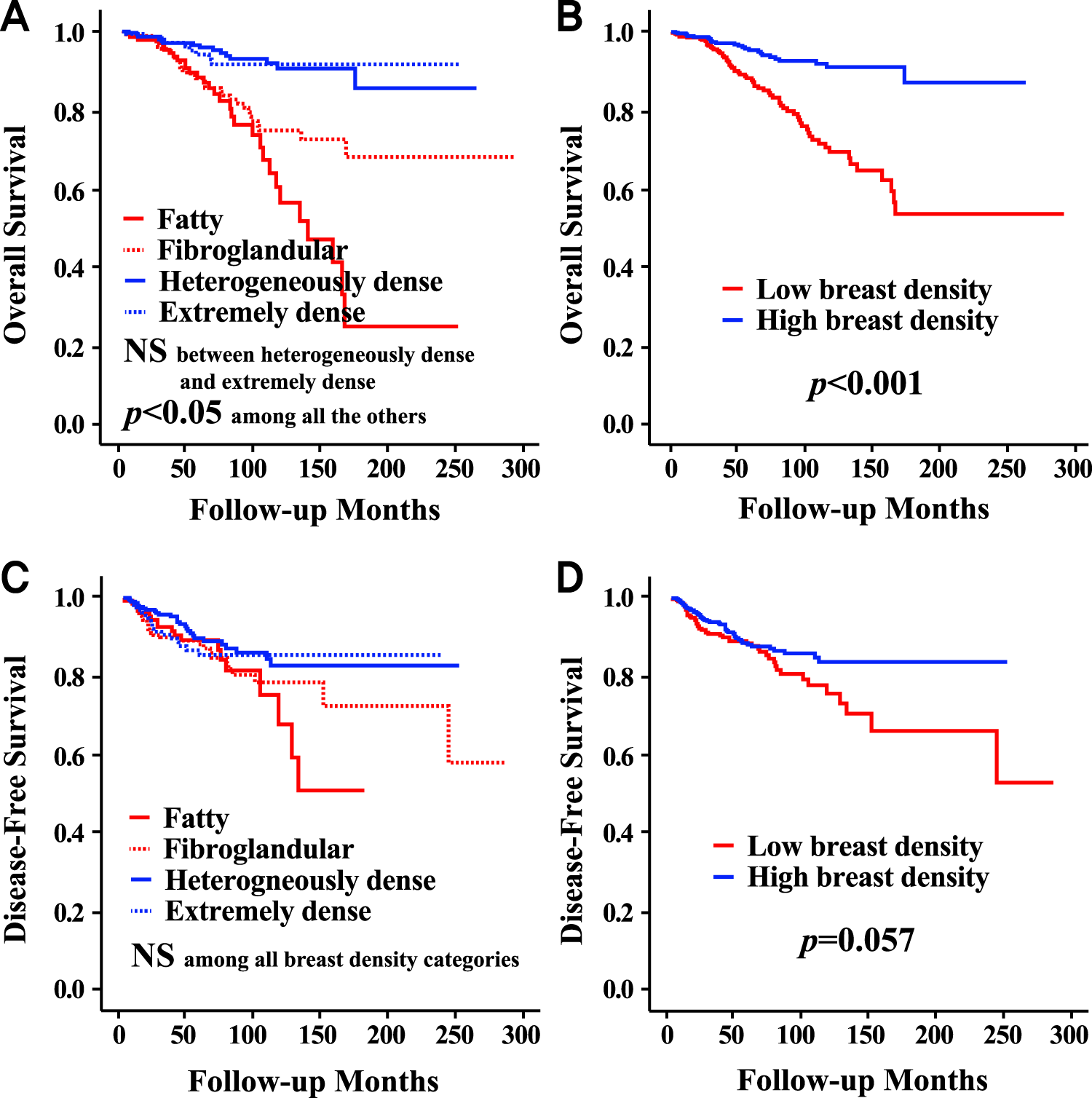



Prognostic Influence Of Preoperative Mammographic Breast Density In Operable Invasive Female Breast Cancer Scientific Reports
B there are scattered areas of fibroglandular densityDense breast tissue makes it harder for radiologists to see cancer On mammograms, dense breast tissue looks white, and breast masses or tumors also look white So, the dense tissue can hide tumors In contrast, fatty tissue looks almost black On a black background it's easy to see a tumor that looks white Radiologists use mammogram images to grade breast tissue based on the proportion of dense to nondense tissue According to the BIRADS reporting system, the levels are (from left to right) almost entirely fatty, scattered areas of fibroglandular density, heterogeneously dense and extremely dense



Http Sydneybreastclinic Com Au App Uploads Sites 45 17 12 Mammographic Breast Tissue Density For Doctors Pdf
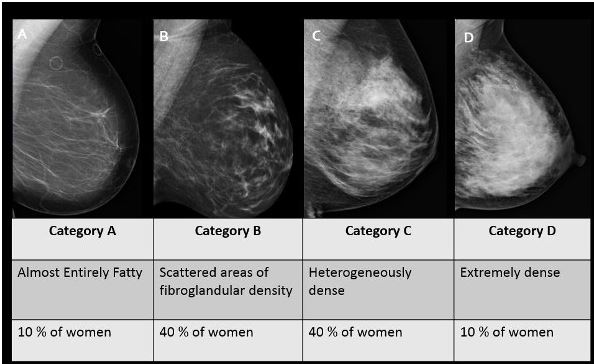



The Connection Between Dense Breasts And Breast Cancer Patricia Bowden Luccardi
Generally, the greater the amount of dense breast tissue you have, the higher your risk of breast cancer It's important to remember that most women are in the middle two categories of breast density (category B or C)Breast density is categorized into one of four categories, defined by the American College of Radiology The breast is almost entirely fatty There are scattered fibroglandular densities The breast tissue is heterogeneously dense, which may obscure small masses (40% of women)Breast density refers to the amount of fibroglandular tissue in a breast relative to fat It can significantly vary between individuals and within individuals over a lifetime Classification There are four descriptors for breast density on mammography in the 5 th edition of BIRADS 1,2 a the breasts are almost entirely fatty;




Example Images Of The Four Breast Density Composition Categories Download Scientific Diagram




The Evolution Of Breast Density Scales And Algorithms Densitas
C HETEROGENEOUSLY DENSE – There are large portions of the breast where dense (fibroglandular) tissue could hide masses Such breasts are considered "dense" About 40% of all women have heterogeneously dense breastsBreast density is not determined by how a breast looks or feels The density is categorized as one of four categories (see below) and is usually in the report sent from the radiologist to the referring doctor A woman's breast tissue is described on mammography as one of four categories (A) Fatty; Breasts can be almost entirely fatty (A), have scattered areas of dense fibroglandular breast tissue (B), have many areas of glandular and connective tissue , or be extremely dense (D) Breasts are classified as "dense" if they fall in the heterogeneously dense or extremely dense (D) categories




Breast Density And Mammogram Reports Dense Breast Tissue




Digital Mammography And Computeraided Diagnosis 1 Breast Cancer
The categories are, (A) almost entirely fatty, (B) scattered fibroglandular density, heterogeneously dense, and (D) extremely dense On a mammogram, fatty and connective tissue shows up as a grey color and glandular tissue shows up as white – as do cancerous tumorsClass B (or 2) Scattered fibroglandular density;Breast Tissue Density, Cancer Risk, and State The breast tissue is heterogeneously dense, Letters rather than numbers for categories 16



What Breast Density Means To You Stacey Vitiello M D



How To Decrease Breast Density To Reduce Breast Cancer Risk Mammalive Foundation
Breast density is not related to how your breasts feel in a self exam or in your physician's exam Breast density also can be inherited, so if your mother had dense breast tissueResults Twenty four patients (533%) had heterogeneously dense breast tissue (ACR category C) and 21 patients (466%) had extremely dense breast tissue (ACR category D) The mammogram detected 36 from 45 breast cancers (80%) while 9 (%) were not detected by mammogram, so the mammogram had a detection rate of breast cancer of 80% in Heterogeneously dense Most of the breast is dense tissue one of the middle two categories control pills can make breasts more dense Breastfeeding Dense breast tissue is




Breast Density What Is It And What Does It Mean For Me Breast360 Org The American Society Of Breast Surgeons Foundation




Breast Density Cancer What Does It Mean To Have Dense Breasts
Low breast density means there is a greater amount of fat compared to breast and connective tissue Breast density and its relationship to estrogen is an important risk factor for diverse subtypes of breast cancer Check out how the "fickle" estrogen shows up in different ways, effecting breast density • Young women have more circulatingThroughout her journey with breast cancer, Joan Lunden, triplenegative breast cancer survivor & longtime Good Morning America anchor, learned by chance that she had dense breast tissue No one had ever specifically told her this information or why it's important to knowType C (heterogeneously dense) another 40 percent of women will have this type of mammographic density, which is considered dense and may obscure small masses Type D (extremely dense) around 10 percent of women undergoing a mammogram will have extremely dense breasts, which lowers the sensitivity of mammography




Imaging Management Of Breast Density A Controversial Risk Factor For Breast Cancer Oncology Nurse Advisor




Breast Density And Mammogram Reports Dense Breast Tissue
For women who have heterogeneously dense breasts (category C), the risk of cancer is about 15 times that of a woman with scattered fibroglandular density (category B) These estimates are for women in general, though, and they don't take other personal risk factors into account READ How old is CeCe Jones Shake It Up?There are scattered areas of density (about 2550 percent), but most of the breast tissue isn't dense Class C (or 3) Heterogeneously dense There is anywhere from 5175 percent dense breast tissue Class D (or 4) Extremely dense Occurs when there is 75 percent or more dense breast tissue This is the highest level of breast density, The breasts are heterogeneously dense, which may obscure small masses (breast composition category c) (Patients in categories c and d may qualify for supplemental screening exams) The tissue undergoes marked background enhancement, increased from prior
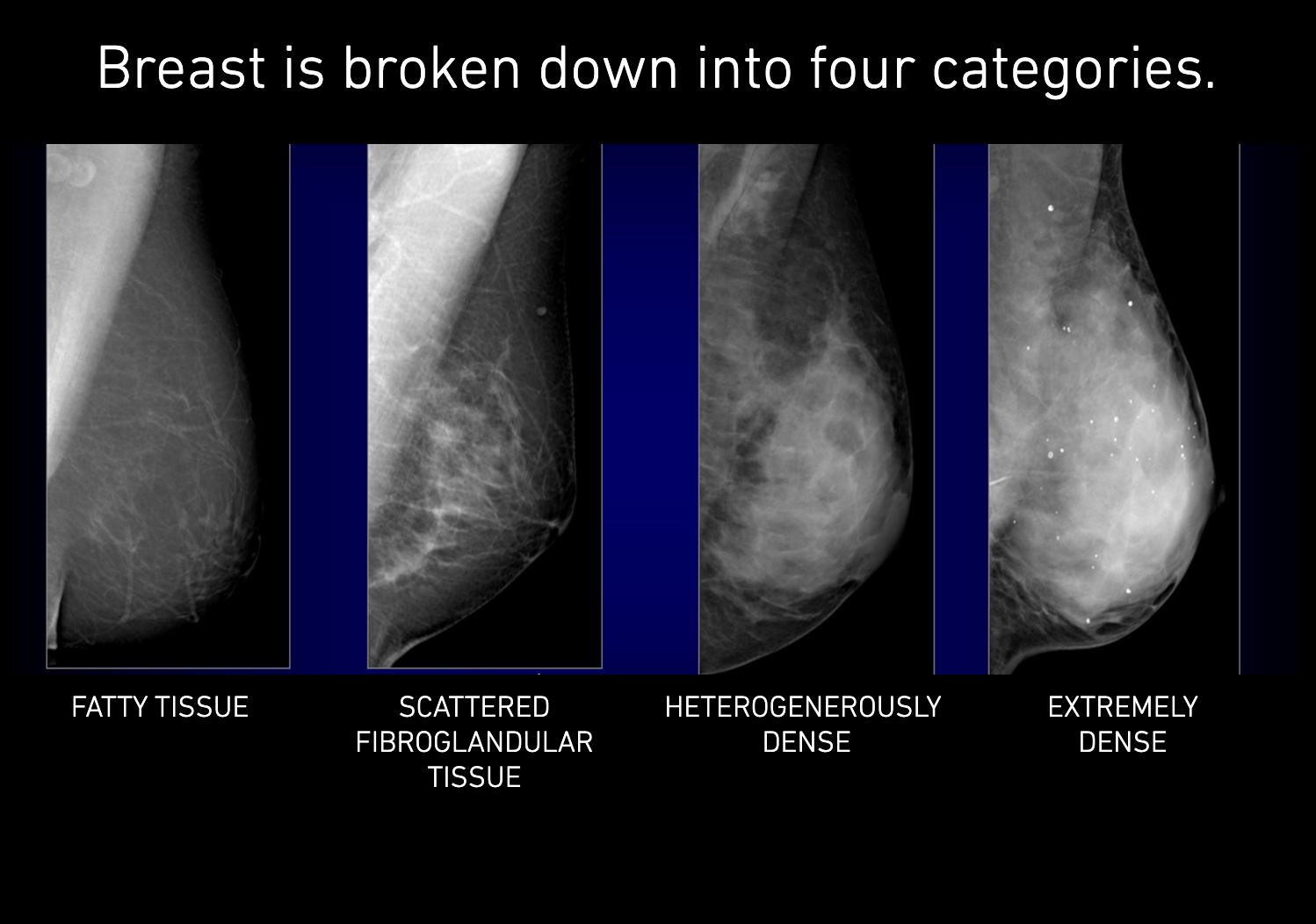



Automated Whole Breast Ultrasound Barbara Hayden Dense Breasts



Breast Density What Do I Need To Know Women S Imaging Center
Specialists term the breast tissue in type 3 as 'heterogeneously dense' The parenchyma ranges from 51% to 75% of the breast tissue 'Heterogeneous' means something contains many different items and has many different variations The advocacy groups state that "dense breast" is associated with high risk of breast cancer This is not entirely true FACT women with heterogeneously dense breasts, 40% of all of us, have a relative risk of breast cancer of 16 compared to women with entirely fatty breasts Scattered fibroglandular breast tissue refers to the density and composition of your breast tissue Forty percent of women have this type of breast tissue




Dense Breast Tissue




Hormonal Effects On Breast Density Fibroglandular Tissue And Background Parenchymal Enhancement Radiographics
(B) Scattered fibroglandular tissue;The radiologist decides which of the 4 categories best describes how dense your breasts are Breasts are almost all fatty tissue There are scattered areas of dense glandular and fibrous tissue More of the breast is made of dense glandular and fibrous Heterogeneously dense breasts is a term used in mammography to describe breasts with a higher percentage of glandular and supportive tissue than fat It occurs in 40% of women and while normal, can make it more difficult to detect breast cancer on mammography




Mammographic Density And Screening Breast Health And Awareness Breast Cancer Network Australia
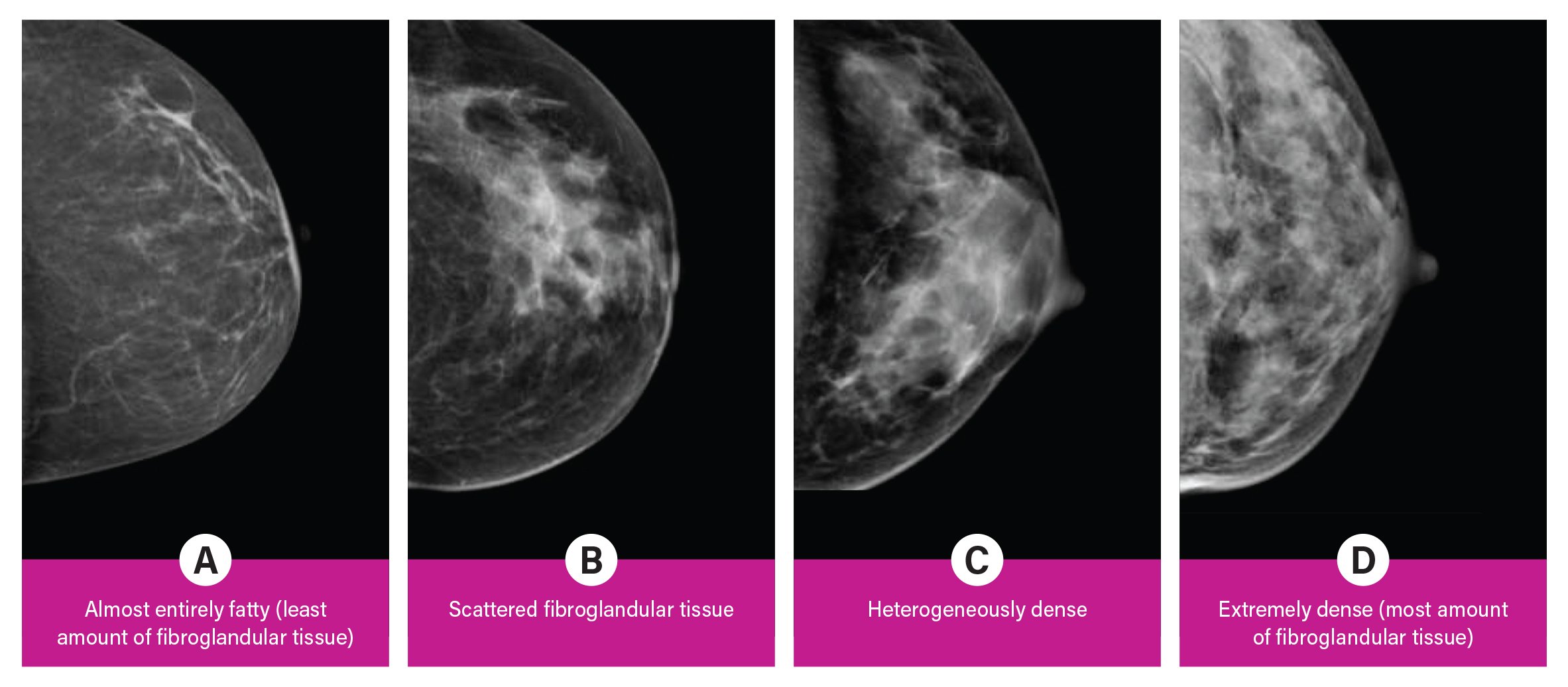



Breast Density Explained Imaging Technology News
DenseBreastinfoorg® is a medicallysourced resource for both patients and health professionals about Dense Breast Tissue, Risk factors, 3D Mammography, Tomosynthesis, Breast MRI, BreastBreast composition a The breasts are almost entirely fatty b There are scattered areas of fibroglandular density c The breasts are heterogeneously dense, which may obscure small masses d The breasts are extremely dense, which lowers the sensitivity of mammography Masses Shape Oval Round Irregular Margin Circumscribed Obscured MicrolobulatedPatients with prior mammograms read as 'heterogeneously dense' or 'extremely dense' breasts, (category C or D) Patients who are high risk for developing breast cancer Patients who have strong desire to pursue screening 3D but do not fulfill either of these criteria
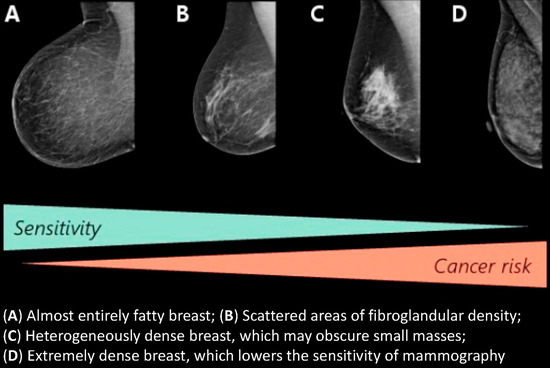



Diagnostics Free Full Text Qualitative Versus Quantitative Mammographic Breast Density Assessment Applications For The Us And Abroad Html
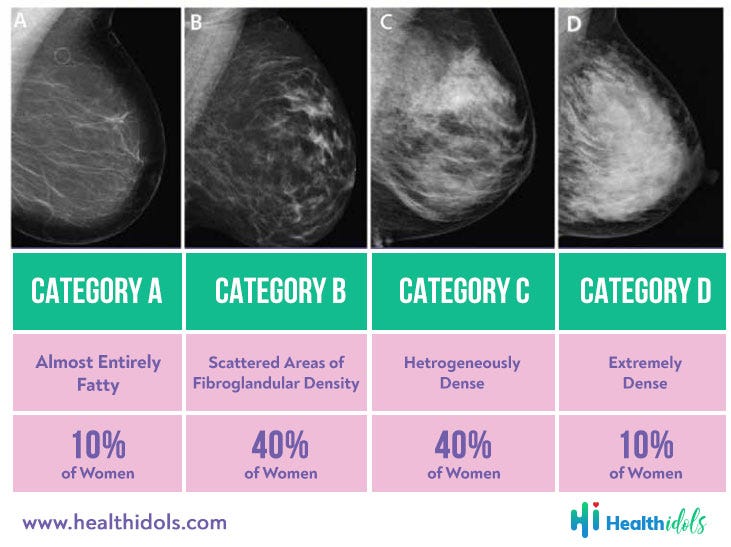



How Breast Density Effect To Breast Cancer Health Idols By Anna S Medium
Category C Heterogeneously dense Category D Extremely dense (most amount of fibroglandular tissue) Mammography has an overall sensitivity of 7090 percent, which is variable, ranging from as low as 3048 percent in patients with dense breasts to as high as 8098 percent in patients with fatty breasts5 Connecticut was the first state to Breast density is a radiologic phenomenon different from the common notion of density as weight per unit of volume Breast density is not discernable by palpation but rather relates to the fact that xrays permeate different types of breast tissue differently Each type of breast tissue reacts differently to xraysClass C (or 3) Heterogeneously dense
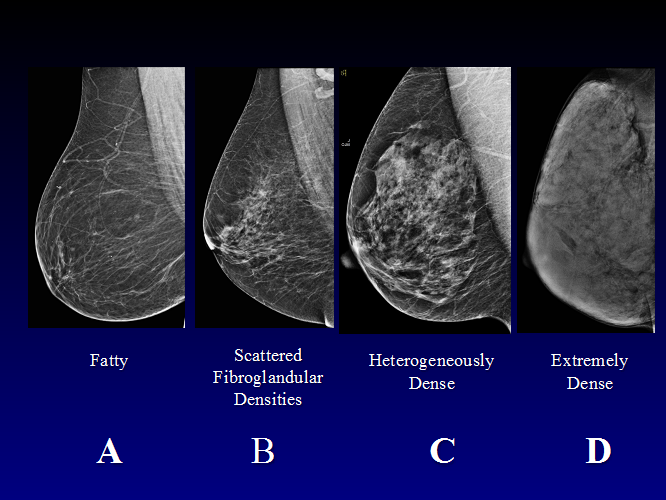



What Should You Know About Breast Density Breast Cancer Awareness Month Women S Health Research Institute




Understanding Scattered Fibroglandular Breast Tissue
It now appears that women with heterogeneously dense breast tissue (category C) have about a 12 times greater risk of developing breast cancer than women with average breast density Women with extremely dense breast tissue (category D) have about twice the risk Category medical health skin and dermatology 48/5 (697 Views 30 Votes) According to the BIRADS reporting system, the levels are (from left to right) A almost entirely fatty, B scattered areas of fibroglandular density, C heterogeneously dense, and D extremely dense Read rest of the answer The distribution of breast density across women in the United States (10% fatty, 10% extremely dense, 40% scattered, and 40% heterogeneously dense) has remained steady over time In general, women with breasts in categories c and d are considered to have "dense



What You Need To Know About Breast Density Cancer Rethink Breast Cancer



Breast Density What Do I Need To Know Women S Imaging Center
Table 5 Breast Tissue Breast Composition Categories a The breasts are almost entirely fatty b There are scattered areas of fibroglandular density c The breasts are heterogeneously dense, which may obscure small masses d The breasts are extremely dense, which lowers the sensitivity of mammographyDr T Bear Doctor of Medicine 2,325 satisfied customers The breasts are heterogeneously dense, which may obscure The breasts are heterogeneously dense, which may obscure small masses (breast composition category c) (Patients in categories c and d may read more The breast tissue becomes less dense Hormone therapy – Those women taking postmenopausal hormone such as estrogen and progestin have higher breast density than those who do not take the hormone (4, 5) Breast Density Classification (categories) The BIRADS Classification System is one of the commonly used systems for breast density



Q Tbn And9gcqybnohlifjvcf2elp Bltnoj94yb7 B6tbcn Jidbtkw3brt1t Usqp Cau




Both Doctors And Patients Confused By Dense Breasts American Council On Science And Health
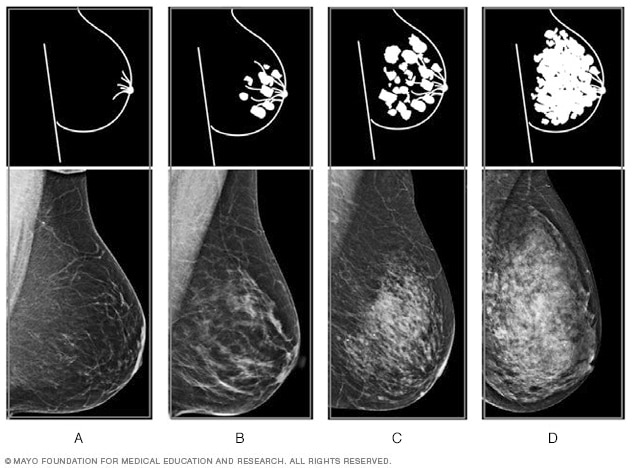



Dense Breast Tissue What It Means To Have Dense Breasts Mayo Clinic




A Novel Breast Tissue Density Classification Methodology Topic Of Research Paper In Medical Engineering Download Scholarly Article Pdf And Read For Free On Cyberleninka Open Science Hub



Dense Breast Legislation Vermont Just Passed A Law Joan Lunden



3
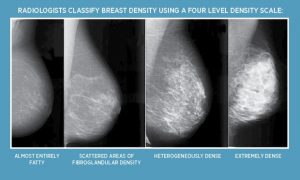



What S The Best Cancer Screening For Women With Dense Breasts Rayus Radiology
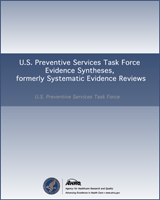



Table 1 Bi Rads Breast Density Descriptions Supplemental Screening For Breast Cancer In Women With Dense Breasts Ncbi Bookshelf




Imaging Breast Density Established And Emerging Modalities Sciencedirect




Breast Density Testing In Rochester Ny Elizabeth Wende Breast Care
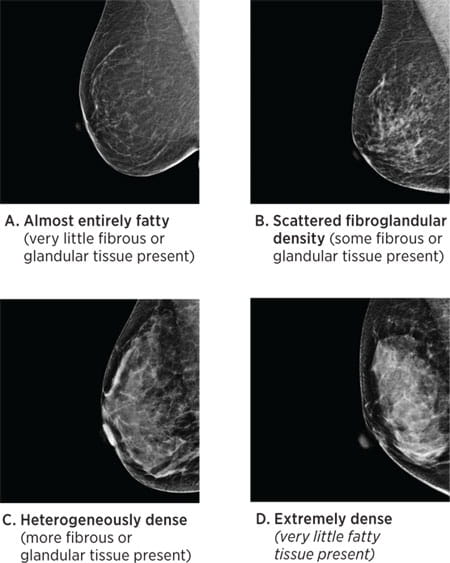



Breast Density What It Is And What It Means To You Mammograms Tomo 3d Mammo Main Line Health
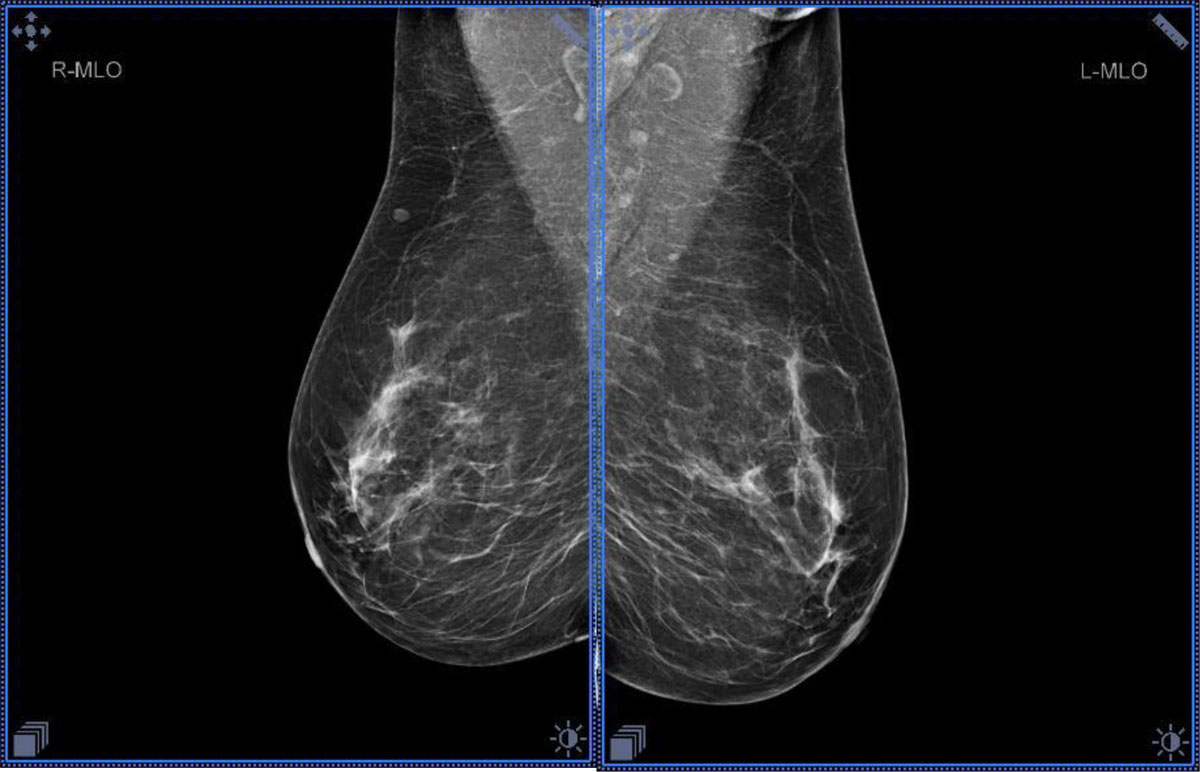



Tomosynthesis In Dense Breasts In Marbella Hc Marbella International Hospital




Epos Trade



Dense Breast Tissue What To Know Uva Radiology
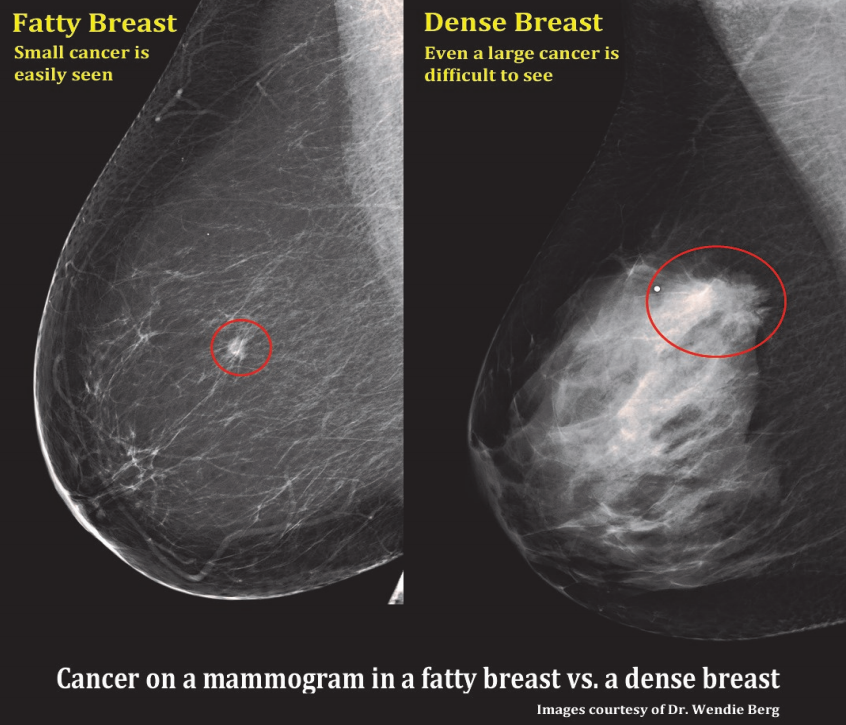



Making Sense Of Dense Breasts Imaging Technology News



What Breast Density Means To You Stacey Vitiello M D




Breast Density And The Importance Of Supplemental Screening Request Pdf




Understanding Breast Density Western Missouri Medical Center




Figure 1 From Dense Breasts A Review Of Reporting Legislation And Available Supplemental Screening Options Semantic Scholar



What Breast Density Means To You Stacey Vitiello M D



Http Sydneybreastclinic Com Au App Uploads Sites 45 17 12 Mammographic Breast Tissue Density For Doctors Pdf




Breast Density And Mammogram Reports Dense Breast Tissue




Dense Breasts Advocacy Science And Cancer Dr Elisabeth Poorman
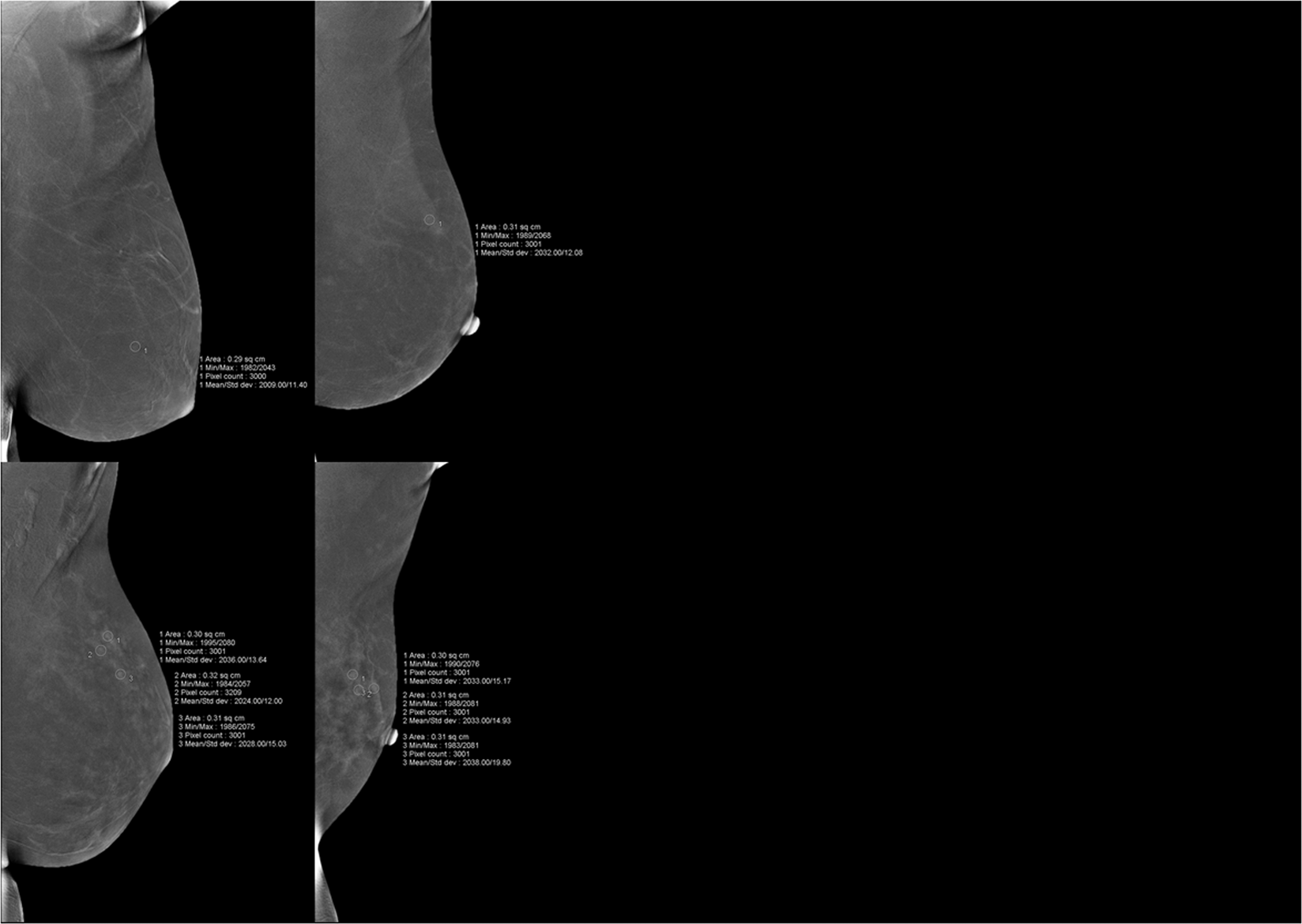



Background Parenchymal Enhancement On Contrast Enhanced Spectral Mammography Influence Of Age Breast Density Menstruation Status And Menstrual Cycle Timing Scientific Reports




Should You Worry About Dense Breasts Everyday Health




Study Shows Breast Density Is Most Common Risk Factor For Breast Cancer
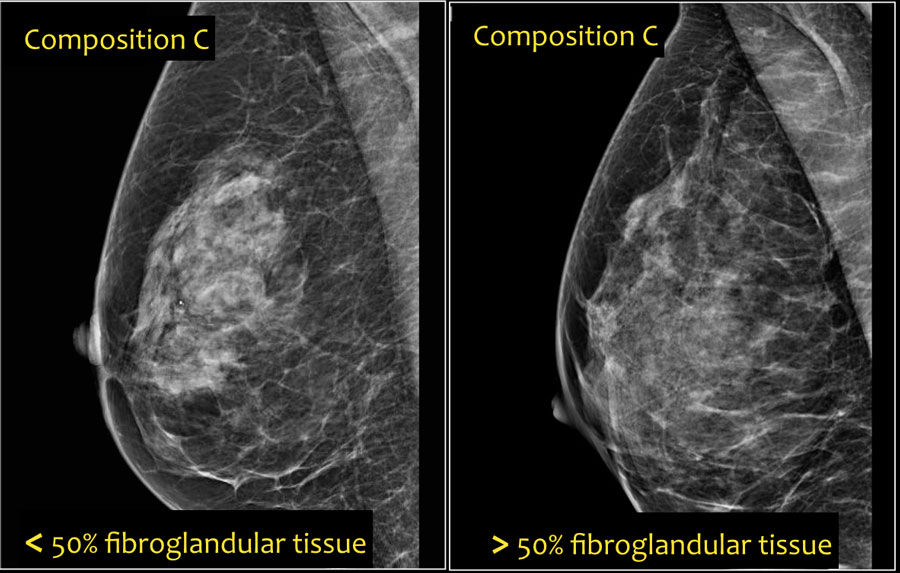



The Radiology Assistant Bi Rads For Mammography And Ultrasound 13




Article On Dense Breasts Standard Of Care



1



Dense Breast Tissue What Is It And Why Should You Care The Mammo Press
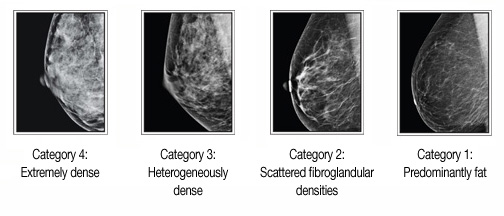



3d Abus Santa Fe Imaging
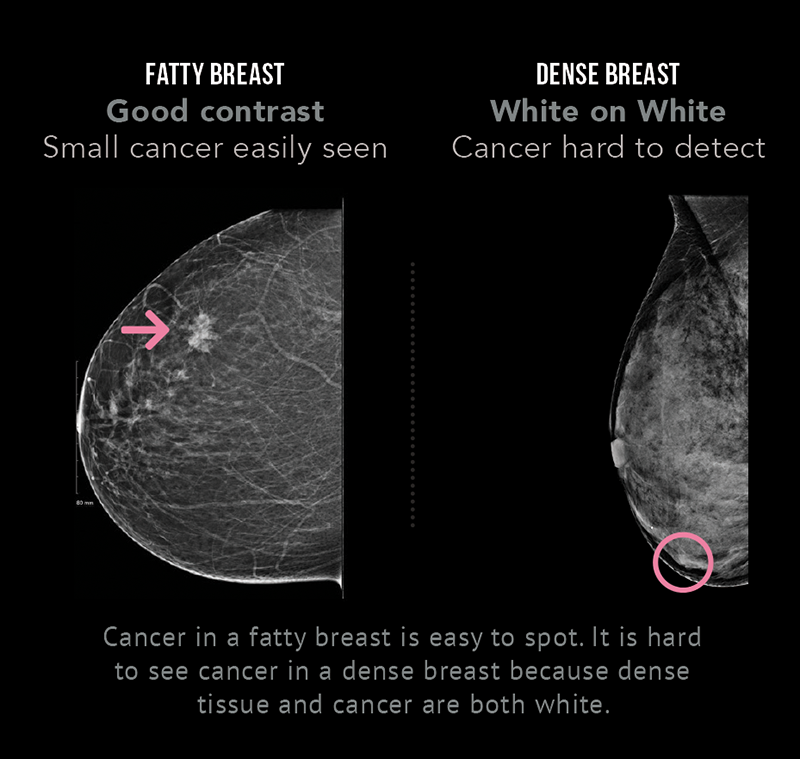



Breast Density Canadian Cancer Survivor Network
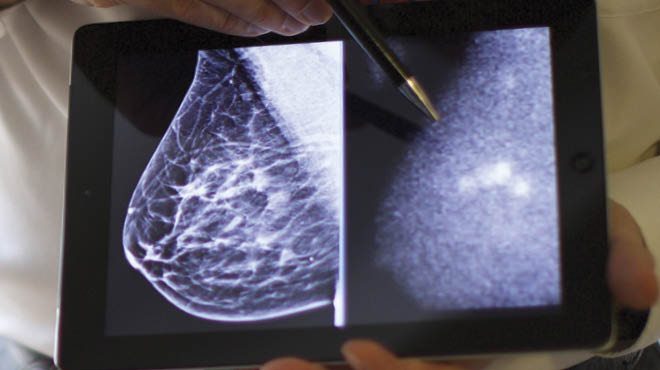



Dense Breast Tissue What You Need To Know Mayo Clinic Health System




The Four Breast Parenchymal Patterns Notes A Fatty B Scattered Download Scientific Diagram
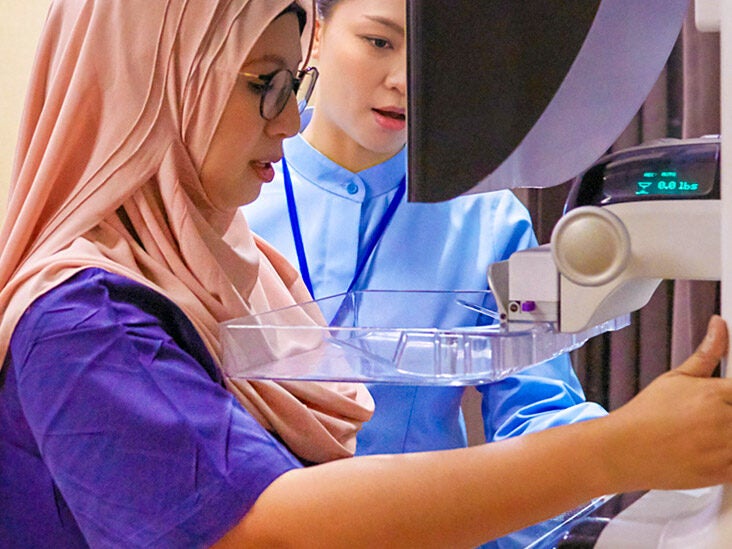



Understanding Scattered Fibroglandular Breast Tissue




Making More Sense Of Breast Density Acp Internist




Breast Density And Breast Cancer Risk A Practical Review Mayo Clinic Proceedings
:max_bytes(150000):strip_icc()/why-are-dense-breasts-a-breast-cancer-risk-430657-v1-8493c59449b8433a906c8394895a462c.png)



The Association Between Dense Breasts And Breast Cancer
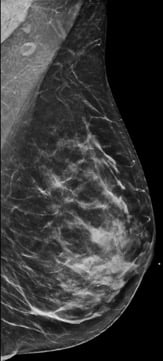



Breast Density Explained Imaging Technology News



What Are Dense Breasts Does It Matter




What Are Dense Breasts Mayfair Diagnostics



The Importance Of Understanding Your Breast Density Women S Health Blog




Dense Breast Clinic Cooper University Health Care




Health Care Provider Faqs Densebreast Info Inc




Breast Density Legislation Breast360 Org The American Society Of Breast Surgeons Foundation



Www Health Gov Au Sites Default Files Documents 19 09 Breast Density Literature Review 1 Pdf
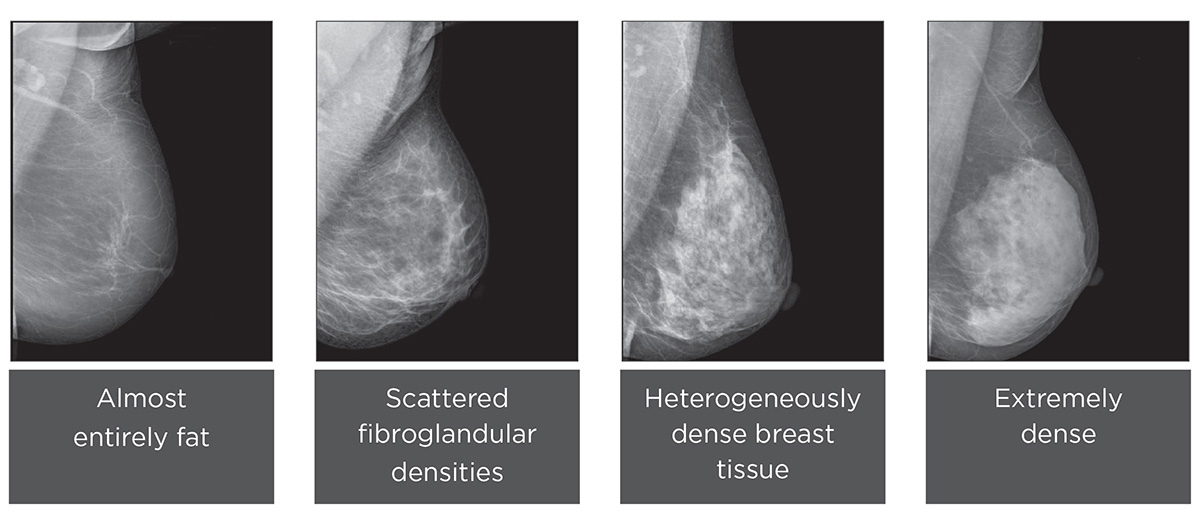



Breast Density Consulting Radiologists
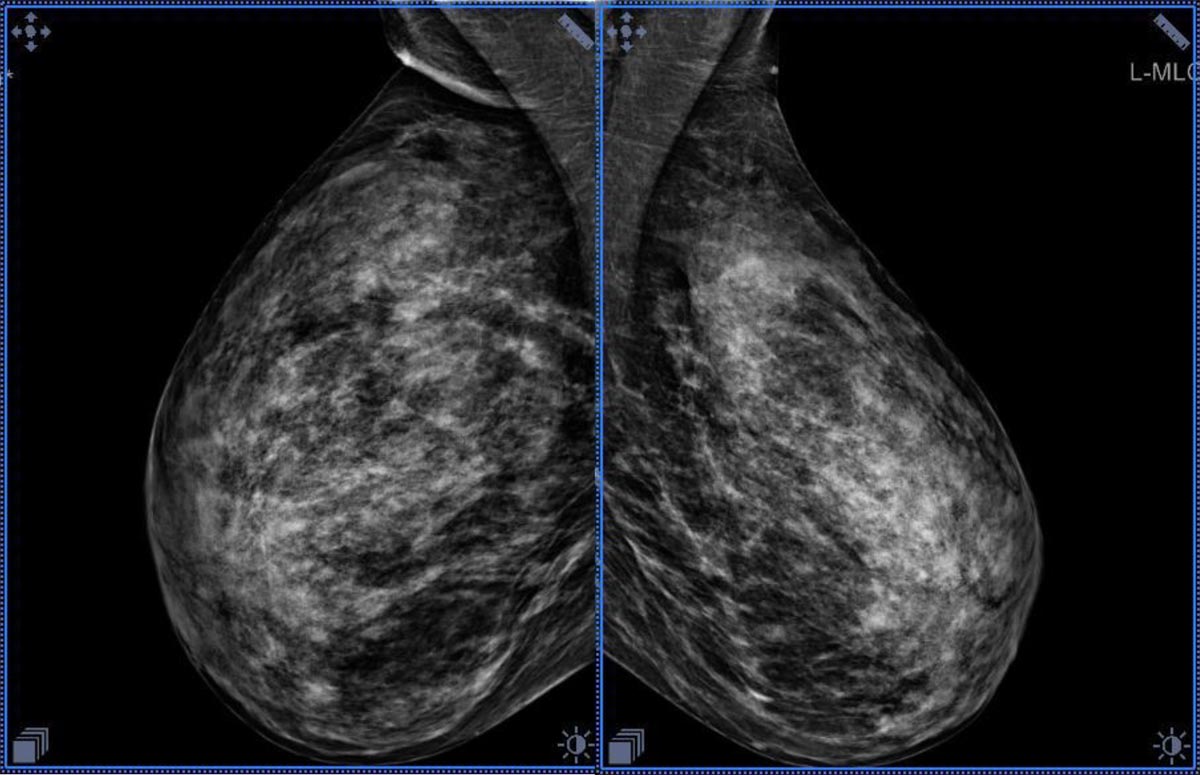



Tomosynthesis In Dense Breasts In Marbella Hc Marbella International Hospital
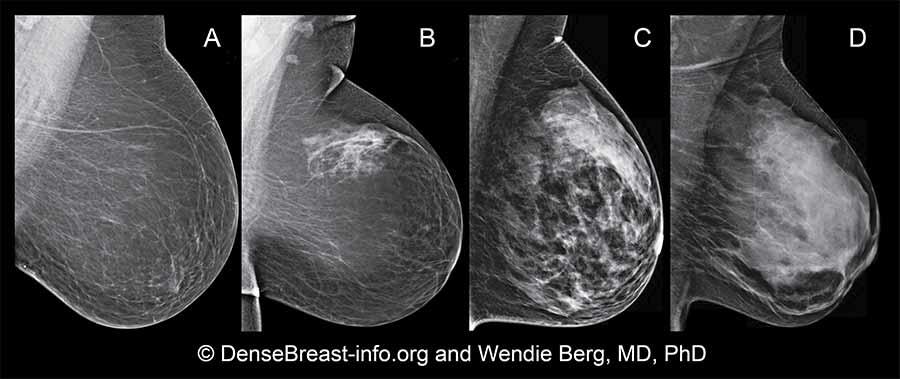



Dense Breasts Answers To Commonly Asked Questions National Cancer Institute



Once Dense Always Dense Joan Lunden




Breast Density What Do I Need To Know Women S Imaging Center




Dense Breast Tissue And Breast Cancer Risk
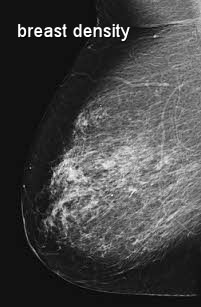



Breast Density Bi Rads Classification Moose And Doc




Breast Density And Breast Cancer Risk A Practical Review Mayo Clinic Proceedings




Breast Density Radiology Reference Article Radiopaedia Org




Breast Density What Is It And What Does It Mean For Me Breast360 Org The American Society Of Breast Surgeons Foundation
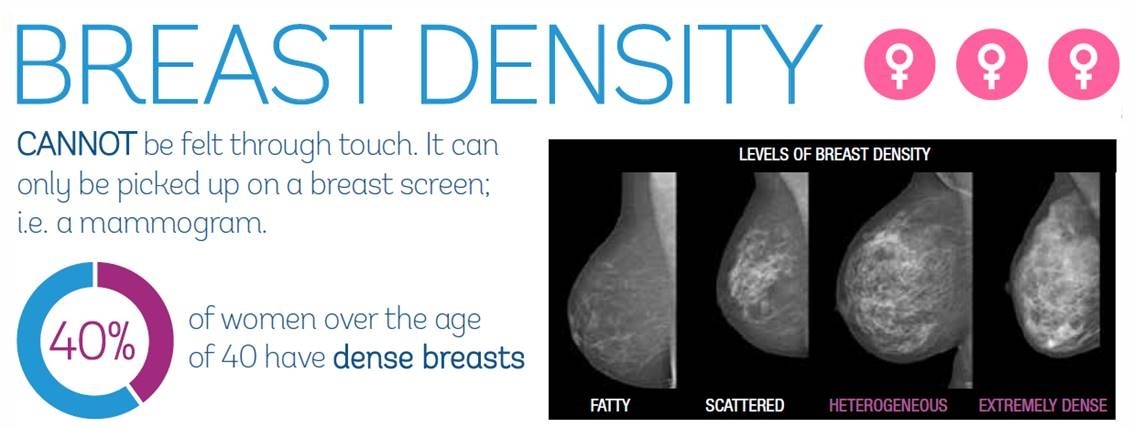



Measuring Breast Density




Breast Density And Mammogram Reports Dense Breast Tissue




Breast Density Canadian Cancer Survivor Network




The Relationship Between Breast Density Age And Mammographic Lesion Type Among Chinese Breast Cancer Patients From A Large Clinical Dataset Bmc Medical Imaging Full Text



Blog How Dense Are You New Research Shows That Not All Dense Breasts Pose An Increased Cancer Risk




Imaging Breast Density Established And Emerging Modalities Sciencedirect
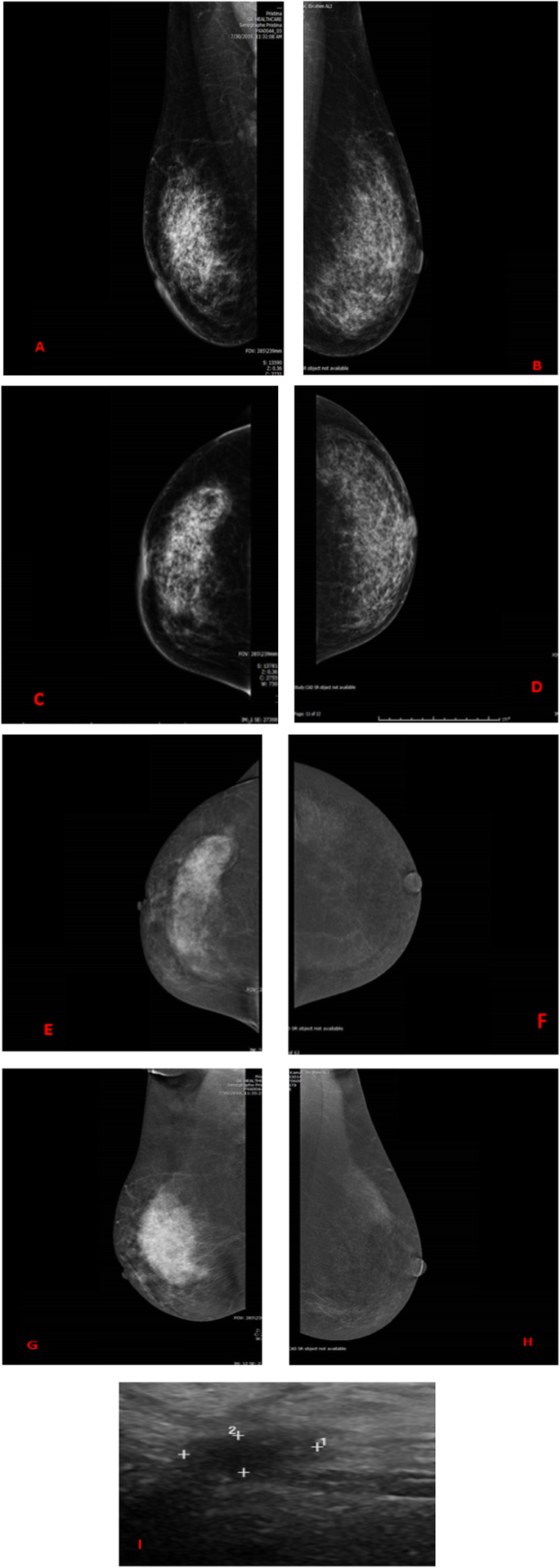



Added Value Of Contrast Enhanced Spectral Mammography In Symptomatic Patients With Dense Breasts Springerlink
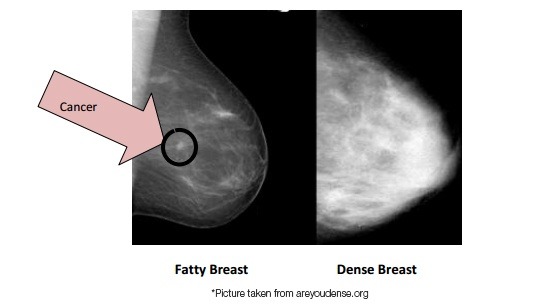



Are You Missing The Added Revenue Of Dense Breast Imaging Radiology Oncology Systems
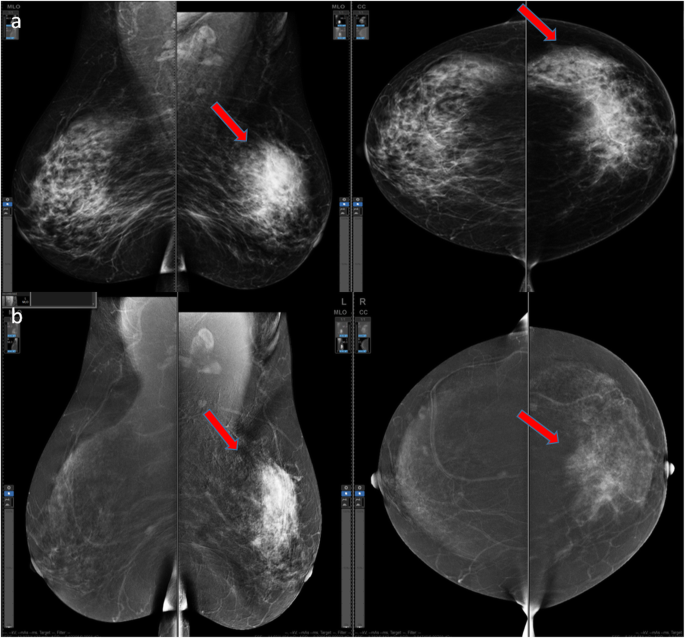



Does Contrast Enhanced Mammography Have An Impact On The Detection Of Cancer In Patients With Risk Of Developing Breast Cancer Springerlink




Hormonal Effects On Breast Density Fibroglandular Tissue And Background Parenchymal Enhancement Radiographics




The Difference Between Dense And Nondense Breast Tissue Article Community Care Physicians P C



3



Breast Density Breastlink
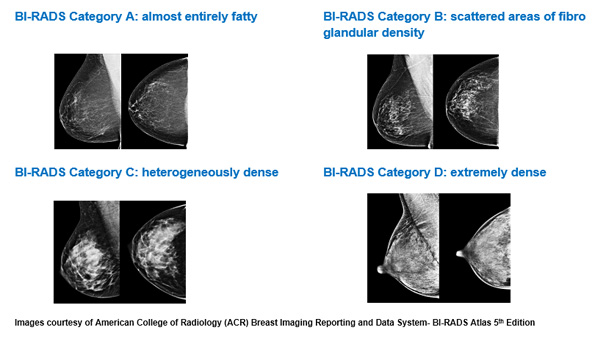



Faq Breast Density



Densebreastscanada Ca Wp Content Uploads 19 11 Opus Magazine For Physicians Pdf
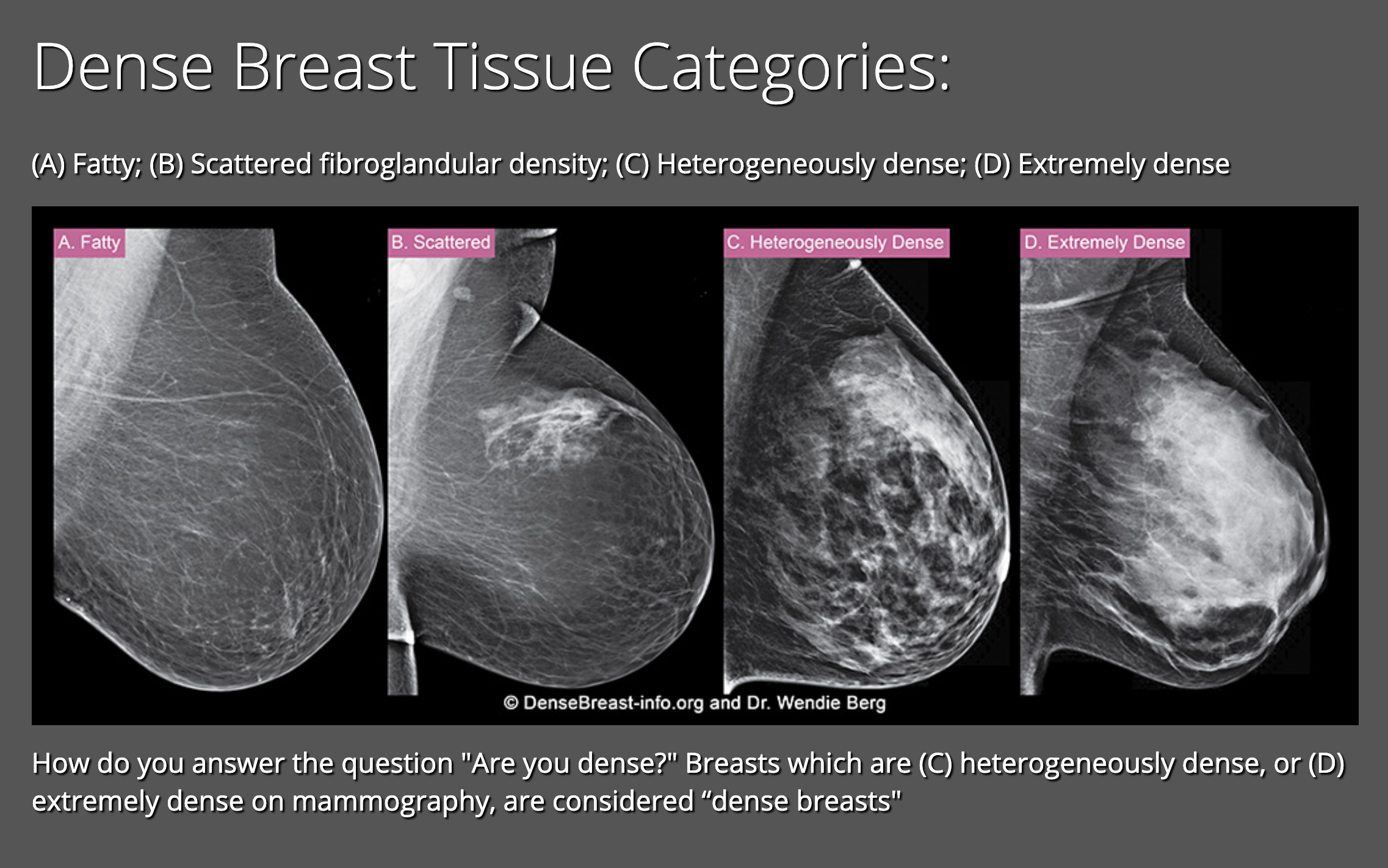



Breast Density Carolina Breast Imaging Specialists
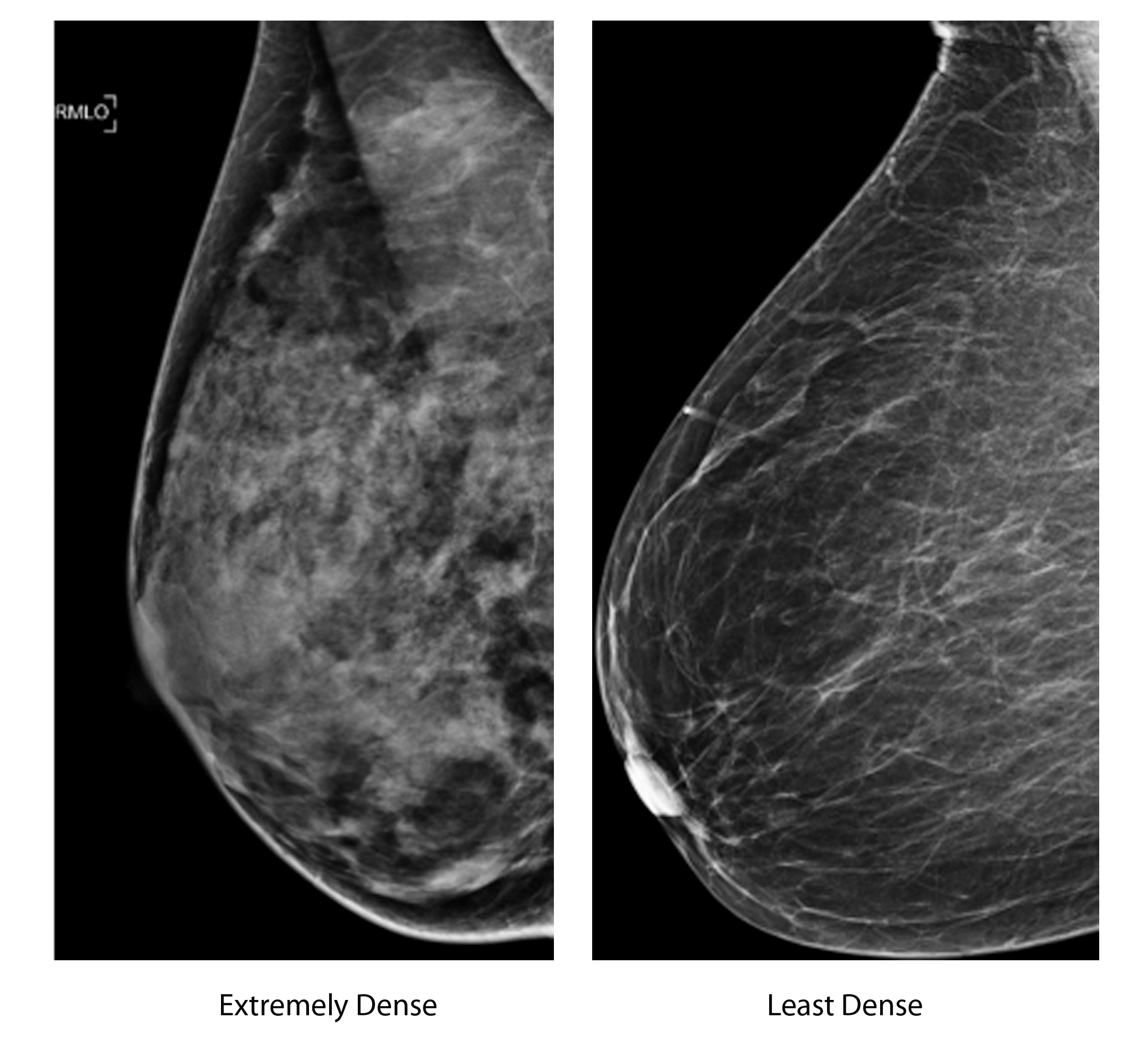



Study Shows Many Women Don T Know Dangers Of Dense Breast Tissue Wtop
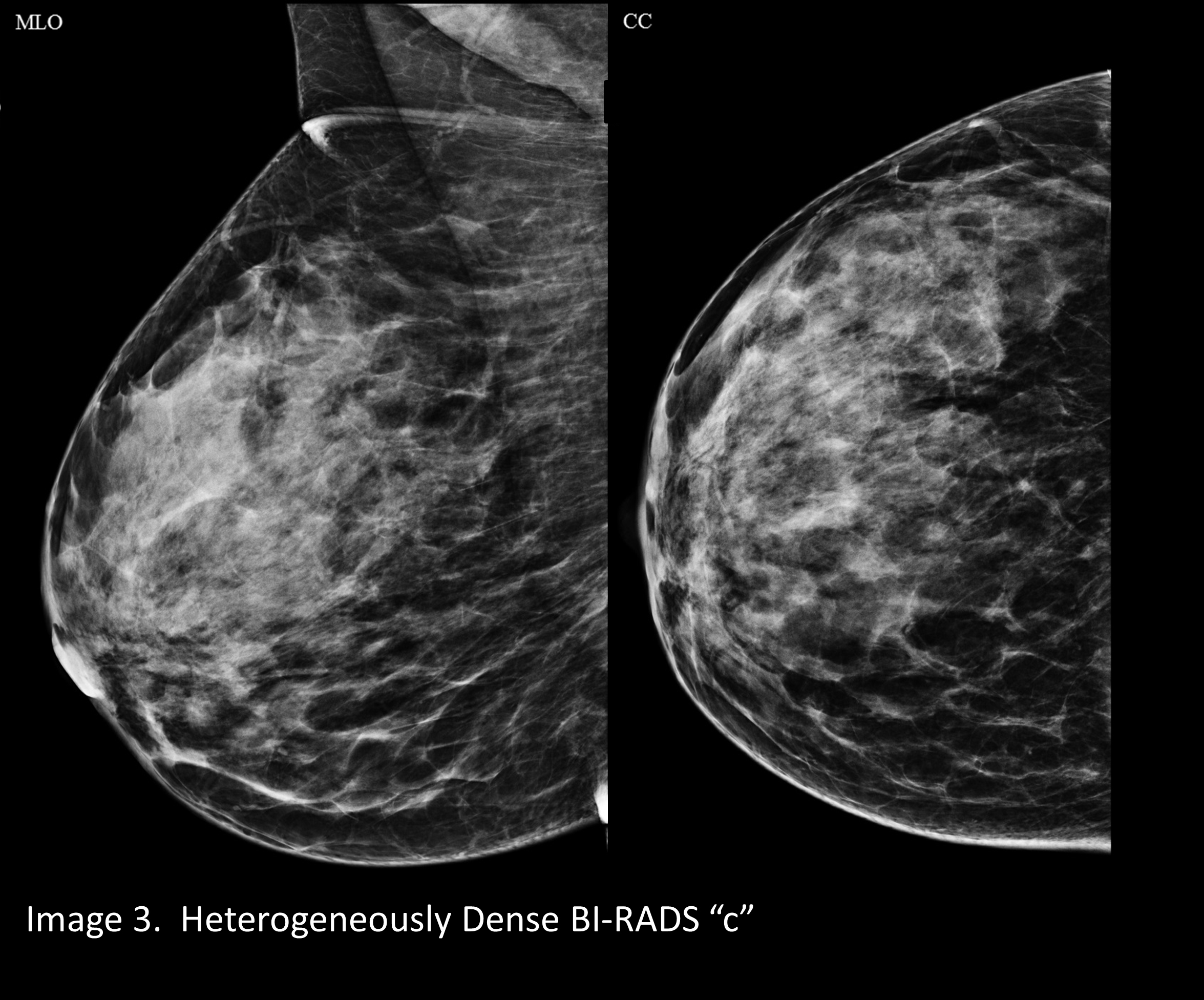



Your Patient Got A Dense Breast Notification With Her Mammogram Report What Are You Supposed To Do Christianacare News
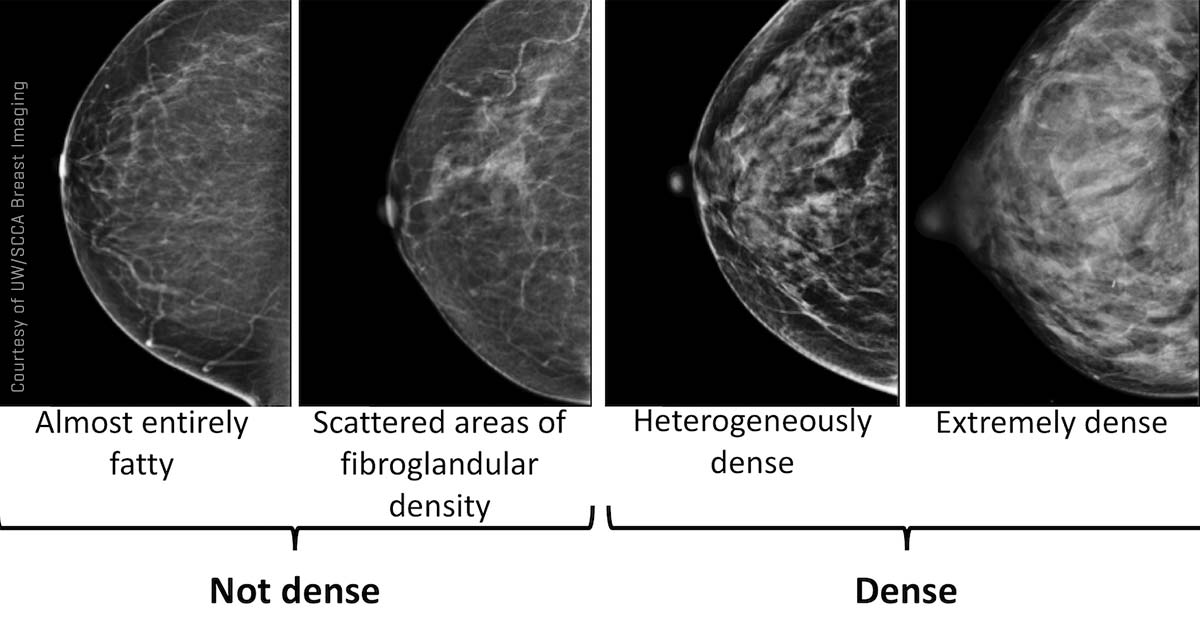



What S The Best Way To Screen Dense Breasts
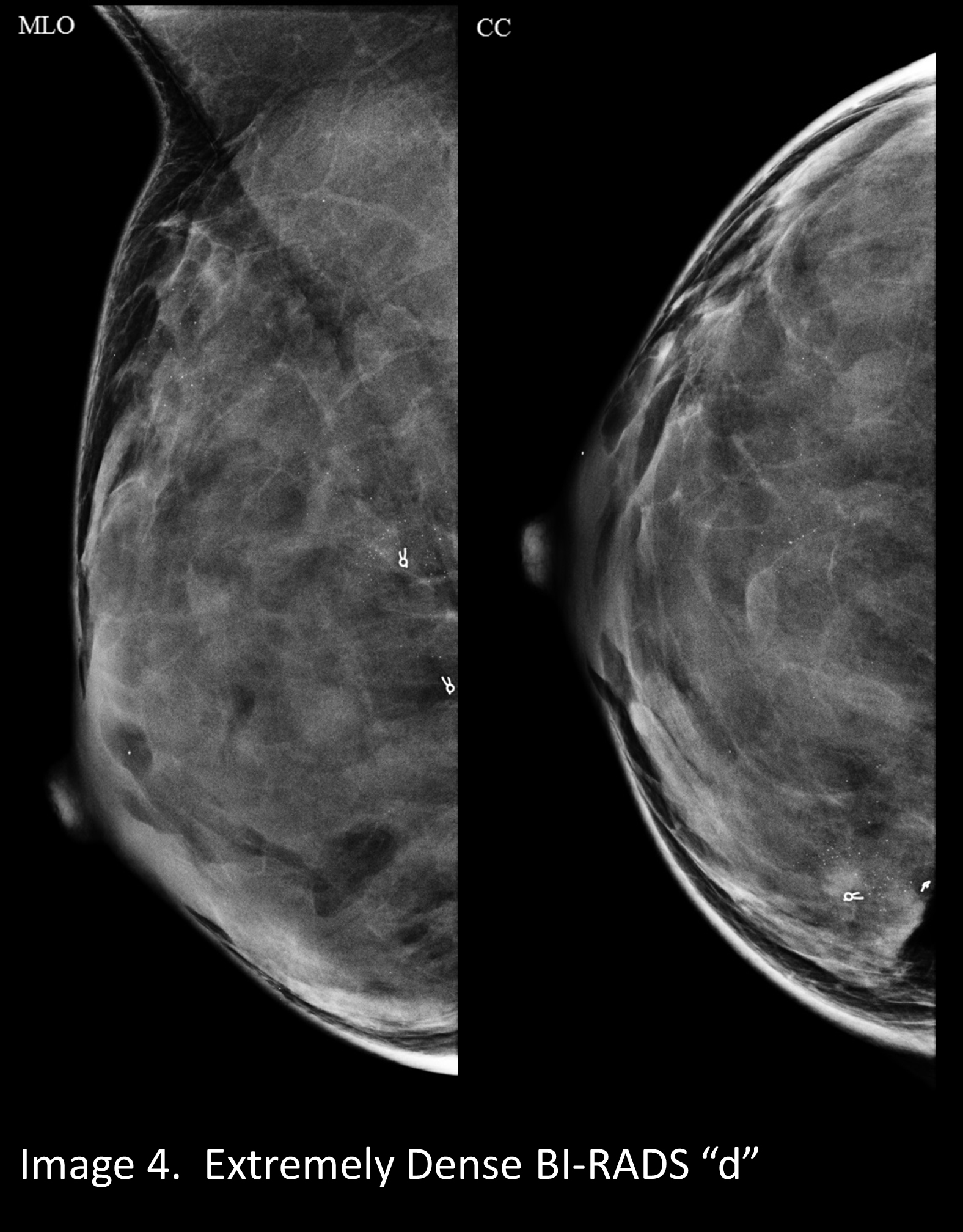



Your Patient Got A Dense Breast Notification With Her Mammogram Report What Are You Supposed To Do Christianacare News




How Dense Are You Dennis R Holmes M D F A C S Breast Cancer Surgeon




Patient Questions And Answers Densebreast Info Inc



0 件のコメント:
コメントを投稿